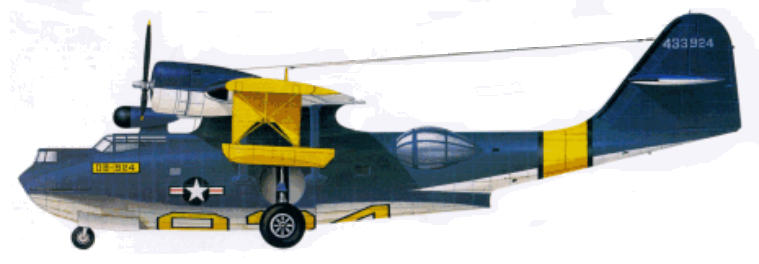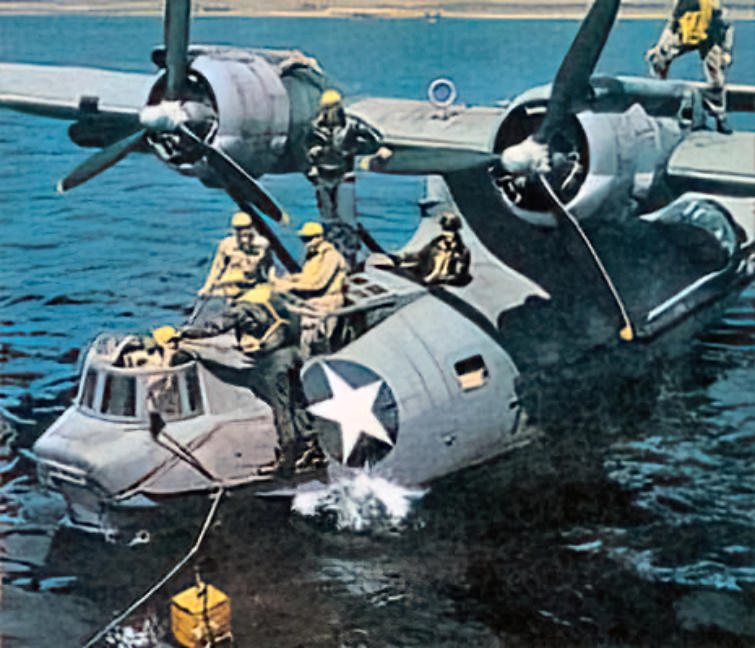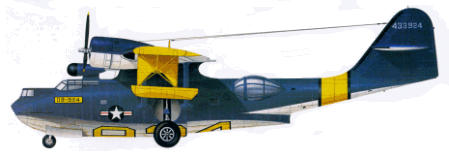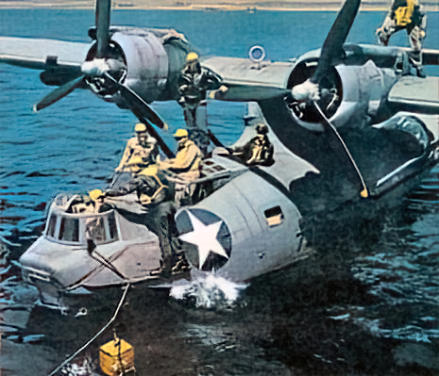

The Aleutians

The Lands of 50 mph Fog
© HLSWILLIWAW.COM
Built with XARA
Consolidated PBY “Catalina”


This PBY Catalina crew is shown in the Aleutians
The Consolidated twin-engine Catalina first took to the skies on March, 1935. It was, therefore, old when W.W.II began. It was
also slow and fairly uncomfortable. While it was a deadly adversary to enemy submarines or warships, it was better known as
the angel of mercy that achieved thousands of rescues throughout the war. Used by virtually all of the allied nations during
WWII, the PBY flew more hours on combat patrols than any other American warplane of the period. The U.S. Navy's VP-11F was
the first unit to receive the new floatplane in October of 1936 as the PBY-1. By mid-1938 14 squadrons were operating PBYs,
with many more scheduled to receive them. Further improvements to the engine specs resulted in new variants entering service
over the next four years, with the PBY-5A finally introducing the tricycle undercarriage to the Catalina. The final wartime
production model was the PBY-6A, which was designated as the OA-10B in USAAF service. The Catalina remained in military
service well into the 1970s.
The Catalina was so slow, that critics joked that its navigator needed a calendar rather than a stopwatch! The Catalina operated
in every theater of the Pacific war, from the southern waters to the Aleutians.
It excelled at long-range patrols, and ranged outward at great distance to stalk the enemy's fleet or to attack its submarines. On
long missions, pilots might be expected to occupy the flight deck for up to 20 hours at a time!
The basic crew consisted of eight. The observer/bombardier in the front nose section, behind which sat the two pilots. Behind
the pilots sat the radio operator and navigator. The flight engineer sat near the center of the aircraft beneath the wing. In the aft
cabin section sat the two gunners/observers. The observation blisters on each side of the rear fuselage could mount heavy
machine guns.
It was a Catalina that first spotted the Japanese fleet during the Battle of Midway, which marked the changing tide of the war.
The "Black Cats" squadron hunted Japanese ships at night. In addition to bombs and depth charges, they also dropped empty
beer bottles which made an eerie whistling descent.
Specifications:
•
First Flight Date: 21 March 1935
•
Type: Seven/nine-seat long-range twin-engine high-wing maritime patrol bomber, amphibian and flying boat.
•
Powerplant: Two 1,200 Pratt & Whitney R-1830-92 Twin Wasp radial piston engines.
•
Max Speed: 179 m.p.h. at 6,500 ft.
•
Ceiling: 18,100 ft.
•
Range: 2,545 miles.
•
Weights: Empty 20,910 lbs; Max (Take-off) 35,420 lbs.
•
Weapons: Three 0.30 cal. (7.62 mm) machine guns, two in bow and one firing aft from the hull step, two 0.50 cal (12.7 mm)
machine guns in beam position; and up to 4,000 lbs of bombs or depth charges.
Dimensions:
•
Span: 104 ft 0 inches
•
Wing Area: Approx. 1,400 sq.ft.
•
Lenght: 63 ft. 10.5 in.
•
Height: 20 ft. 2 in.
Additional References: 1) Jane's Historic Military Aircraft 2) Aircraft of the World
Updated: 09 Dec 2021


The Aleutians

The Lands of 50 mph Fog
Consolidated PBY “Catalina”


This PBY Catalina crew is shown in the Aleutians
The Consolidated twin-engine Catalina first took to the skies on
March, 1935. It was, therefore, old when W.W.II began. It was also
slow and fairly uncomfortable. While it was a deadly adversary to
enemy submarines or warships, it was better known as the angel of
mercy that achieved thousands of rescues throughout the war.
Used by virtually all of the allied nations during WWII, the PBY flew
more hours on combat patrols than any other American warplane of
the period. The U.S. Navy's VP-11F was the first unit to receive the
new floatplane in October of 1936 as the PBY-1. By mid-1938 14
squadrons were operating PBYs, with many more scheduled to
receive them. Further improvements to the engine specs resulted in
new variants entering service over the next four years, with the
PBY-5A finally introducing the tricycle undercarriage to the
Catalina. The final wartime production model was the PBY-6A,
which was designated as the OA-10B in USAAF service. The
Catalina remained in military service well into the 1970s.
The Catalina was so slow, that critics joked that its navigator
needed a calendar rather than a stopwatch! The Catalina operated
in every theater of the Pacific war, from the southern waters to the
Aleutians.
It excelled at long-range patrols, and ranged outward at great
distance to stalk the enemy's fleet or to attack its submarines. On
long missions, pilots might be expected to occupy the flight deck
for up to 20 hours at a time!
The basic crew consisted of eight. The observer/bombardier in the
front nose section, behind which sat the two pilots. Behind the
pilots sat the radio operator and navigator. The flight engineer sat
near the center of the aircraft beneath the wing. In the aft cabin
section sat the two gunners/observers. The observation blisters on
each side of the rear fuselage could mount heavy machine guns.
It was a Catalina that first spotted the Japanese fleet during the
Battle of Midway, which marked the changing tide of the war. The
"Black Cats" squadron hunted Japanese ships at night. In addition
to bombs and depth charges, they also dropped empty beer bottles
which made an eerie whistling descent.
Specifications:
•
First Flight Date: 21 March 1935
•
Type: Seven/nine-seat long-range twin-engine high-wing
maritime patrol bomber, amphibian and flying boat.
•
Powerplant: Two 1,200 Pratt & Whitney R-1830-92 Twin Wasp
radial piston engines.
•
Max Speed: 179 m.p.h. at 6,500 ft.
•
Ceiling: 18,100 ft.
•
Range: 2,545 miles.
•
Weights: Empty 20,910 lbs; Max (Take-off) 35,420 lbs.
•
Weapons: Three 0.30 cal. (7.62 mm) machine guns, two in bow
and one firing aft from the hull step, two 0.50 cal (12.7 mm)
machine guns in beam position; and up to 4,000 lbs of bombs or
depth charges.
Dimensions:
•
Span: 104 ft 0 inches
•
Wing Area: Approx. 1,400 sq.ft.
•
Lenght: 63 ft. 10.5 in.
•
Height: 20 ft. 2 in.
Additional References: 1) Jane's Historic Military Aircraft 2) Aircraft
of the World
Updated: 09 Dec 2021
© HLSWILLIWAW.COM
Built with XARA

















